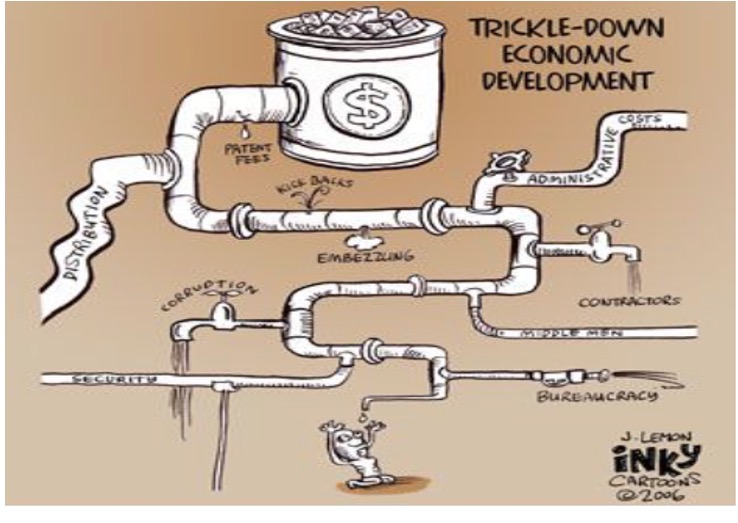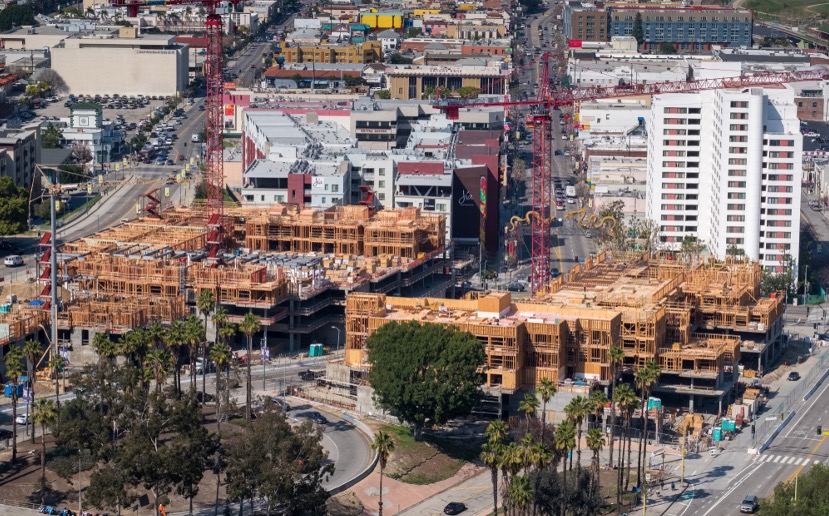CommentsPLANNING WATCH - To answer this question, let’s look at some rare good news.
California’s planning laws require Los Angeles to prepare, adopt, and maintain a General Plan with eight mandatory elements (chapters): Land Use, Housing, Circulation, Conservation, Open Space, Noise, Safety, and a new element, Environmental Justice.

The other good news is that California, through the Governor’s Office of Planning and Research, offers local governments detailed Guidelines to prepare General Plan elements, including the Housing Element.
The third piece of good news is that LA’s voter-adopted Charter also requires the Department of City Planning to prepare and maintain a General Plan:
Los Angeles City Charter Section 551: (b) The Director of Planning or his or her designee shall: (1) Prepare the proposed General Plan of the City and proposed amendments to the General Plan; . . .
Los Angeles City Charter Section 554: The General Plan shall be a comprehensive declaration of goals, objectives, policies, and programs for the development of the City and shall include, where applicable, diagrams, maps, and text setting forth those and other features.
(a) Purposes. The General Plan shall serve as a guide for:
(1) The physical development of the City;
(2) The development, correlation, and coordination of official regulations, controls, program, and services; and
(3) The coordination of planning and administration by all agencies of the City government, other governmental bodies, and private organizations and individuals involved in the development of the City.
(b) Content. The General Plan shall include those elements required by state law and any other elements determined to be appropriate by the Council by resolution, after considering the recommendations of the City Planning Commission.
But this is where the good news stops. LA’s General Plan is old and poorly monitored. More specifically, a partial General Plan monitoring process ended in 1999. It has finally resumed, and the current General Plan monitoring report can be found on-line. This monitoring report, however, does not answer a basic question: Has LA’s General Plan successfully guided the city’s physical development, integrated official regulations, and coordinated LA’s planning and administration. Instead, the report is a 29 page compilation of approved real estate projects, grant applications, and assorted municipal ordinances.
As for the General Plan itself, the facts speak for themselves. Most of its elements are out-of-date, with few updates underway.
The Land Use element consists of LA’s 35 Community Plans and two District Plans. Only six “New Community Plans” have been adopted since 2004, three of which are more than six years old, so require another update according to a 2017 City Council Directive. 17 Community Plans are buried in an endless update process, and 14 Community and District Plans have not yet begun their updates.
As for the other General Plan’s elements, most are out-of-date, including the eight mandatory elements (highlighted). Two optional elements, Infrastructure and Public Services, are older than the city planners who may eventually update them: Air Quality (1992), Conservation (2001), Health (2015), Safety (1986), Mobility (2015), Infrastructure (1971), Open Space (1973), Public Facilities (1969), Noise (1999), and Housing (2021).
Clearly the largest planning department in the United States has its work cut out for it. In addition to updating the General Plan’s out-of-date elements, it must prepare a new mandatory Environmental Justice element from scratch and draft annual monitoring reports that could determine if the General Plan’s elements are meeting their goals.
In the list above, only the Housing Element is current. The City Council adopted it in November 2021 but will soon consider a 5,714 page amendment package. These voluminous amendments modify 36 of the Housing Element’s 131 implementation programs and add five new programs.
These implementation programs are assigned to many different departments and agencies, which are identified by their acronyms: LAHD, CDBG, HOME, ADDI, ARRA, BEGIN, CalHOME, CAO, City Council, GSD, LACP, LEAP, CDLAC, SB 2 PLHA, CLA, HACLA, CDBG, ESG, HOPWA General Fund, DOD, HUD, NOFA, LADOT, EWDD, LA CIVIL RIGHTS, CDBG, HOME, ESG, HOPWA General Fund, LA REPAIR, and CIFD. Whether these agencies are aware of LA’s 2021-2029 Housing Element, its 136 implementation programs, and their agency’s role, is doubtful. Likewise, no one knows if the Department of City Planning will carefully monitor the amended Housing Element to determine if its implementation programs exist and are meeting the Element’s goals.
Considering how old the General Plan’s elements are, you might wonder why the one new element, the Housing Element, warrants so much attention.
This is why. In November 2021 Los Angeles sent its newly adopted Housing Element to the State’s Department of Housing and Community Development (HCD) for approval. HCD completed its review and sent a letter to LA’s Department of City Planning on February 22, 2022. It stated that LA’s 2021-2029 Housing Element needed to be revised or the City could lose funding: “Programs and actions must include metrics and milestones to target significant and meaningful affirmatively furthering fair house (AFFH) outcomes and evaluate the effective programs towards implementation.”
In response, the Department of City Planning quickly adjusted the wording of 36 implementation programs and added five new ones. As these Housing Element amendments barrel through to City Council adoption, a vital question remains unasked and unanswered, who do the amendments most benefit: real estate investors or the city’s strapped residents?

Even if the amendments successfully respond to the California Department of Housing and Community Development’s (HCD) February 22 letter, will they, in fact, promote equity? Or are they simply a paper and pencil exercise to meet the letter of the law, regardless of actual outcomes, which I expect will be more trickle-up wealthfare leaving LA’s worsening housing crisis intact?
The only way to answer this question would be rigorous monitoring. This is the only way to determine if the Housing Element 136 implementation programs have been rolled out and if they have reduced housing costs, homelessness, and economic inequality.
So far, I have looked in vain for such a monitoring program. Until it appears, the public should not expect the amended 2021-2029 Housing Element to work, to meet its goals. Gentrification will continue in the form of rent increases, McMansions, and new upscale apartments. The supply of low-priced housing will steadily decline, unlike windfall profits for real estate speculators, which will grow, tracking the implementation of the Housing Element’s up-zoning and enhanced density bonuses policies.
Can you blame City Hall for not monitoring the Housing Element’s real world results?
(Dick Platkin is a former Los Angeles city planner who reports on local planning issues for CityWatchLA. He serves on the board of United Neighborhoods for Los Angeles (UN4LA) and the Greater Fairfax Residents Association. Previous Planning Watch columns are available at the CityWatchLA archives. Please send questions and corrections to [email protected].)
